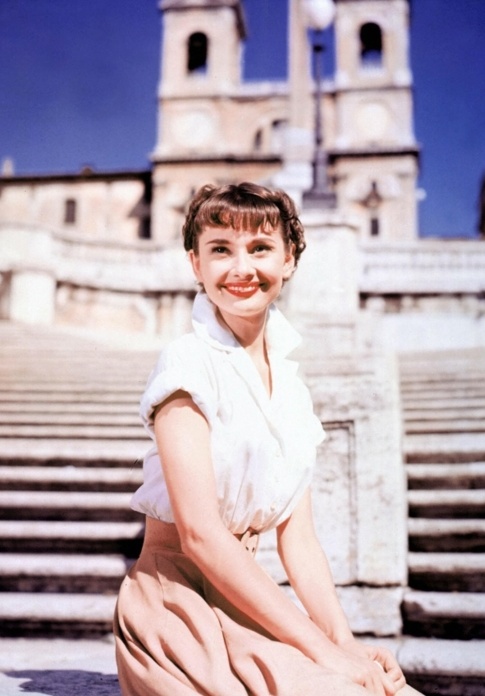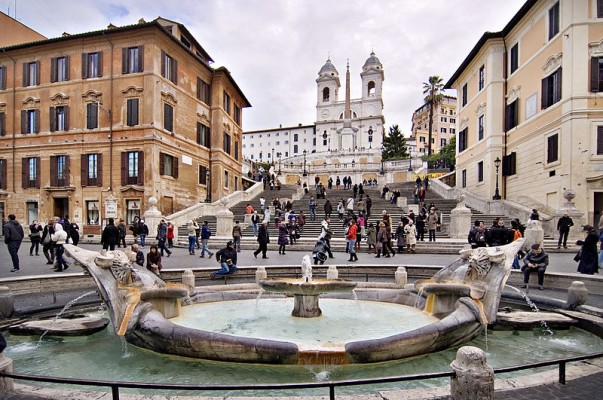 Romeo and Juliet as depicted by Joseph Christian Leyendecker, 1929
Romeo and Juliet as depicted by Joseph Christian Leyendecker, 1929
“Star-crossed” or “star-crossed lovers” is a phrase describing a pair of lovers whose relationship is often thwarted by outside forces. The term encompasses other meanings, but originally means the pairing is being “thwarted by a malign star” or that the stars are working against the relationship. Astrological in origin, the phrase stems from the belief that the positions of the stars ruled over people’s fates, and is best known from the play Romeo and Juliet by the Elizabethan playwright William Shakespeare. Such pairings are often but not always said to be doomed from the start.
The phrase was coined in the prologue of Shakespeare’s Romeo and Juliet:
“From forth the fatal loins of these two foes,
A pair of star-cross’d lovers take their life” (5–6).
It also refers to destiny and the inevitability of the two characters’ paths crossing each other. It usually but not always refers to unlucky outcomes, since Romeo and Juliet’s affair ended tragically. Further, it connotes that the lovers entered into their union without sufficient forethought or preparation; that the lovers may not have had adequate knowledge of each other or that they were not thinking rationally.
 Wuthering Heights (William Wyler, 1939)
Wuthering Heights (William Wyler, 1939)
Examples of famous star-crossed lovers vary in written work. Pyramus and Thisbe are usually regarded as the source for Romeo and Juliet, featured in A Midsummer Night’s Dream, and Catherine Earnshaw and Heathcliff from Wuthering Heights are considered one of the greatest love stories in literary works. In Wuthering Heights, the narrative tells the tale of the all-encompassing and passionate, yet thwarted, love between Heathcliff and Catherine Earnshaw, and how this unresolved passion eventually destroys them and many around them.
 The Parting of Lancelot and Guinevere, Julia Margaret Cameron, 1874. Albumen silver print from glass negative. David Hunter McAlpin Fund, 1952
The Parting of Lancelot and Guinevere, Julia Margaret Cameron, 1874. Albumen silver print from glass negative. David Hunter McAlpin Fund, 1952
Lancelot and Guinevere are often remembered for their affair. Guinevere was the queen of Camelot and wife of King Arthur, while Lancelot was a trusted knight of Arthur’s Round Table. In some versions of the tale, she is instantly smitten, and when they consummate their adulterous passion, it is an act which paves the way for the fall of Camelot and Arthur’s death.
 The End of The Song, Edmund Leighton, 1902
The End of The Song, Edmund Leighton, 1902
The legend of Tristan and Iseult (also known as Tristan and Isolde) is an influential romance and tragedy, retold in numerous sources with as many variations. The tragic story is of the adulterous love between the lovers. The narrative predates and most likely influenced the Arthurian romance of Lancelot and Guinevere, and has had a substantial impact on Western art and literature since it first appeared in the 12th century. While the details of the story differ from one author to another, the overall plot structure remains much the same.
Hero and Leander is a Greek myth, relating the story of Hero (Greek: Ἡρώ), a priestess of Aphrodite who dwelt in a tower in Sestos, at the edge of the Hellespont, and Leander (Greek: Λέανδρος, Leandros), a young man from Abydos on the other side of the strait. Leander fell in love with Hero and would swim every night across the Hellespont to be with her. Hero would light a lamp at the top of her tower to guide his way.
 Sarah Bernhardt in Pelléas et Mélisandre
Sarah Bernhardt in Pelléas et Mélisandre
Pelléas and Mélisande (French: Pelléas et Mélisande) is a Symbolist play by Maurice Maeterlinck about the forbidden, doomed love of the title characters. A classical myth, was a common subject for art during the Renaissance and Baroque eras.
Troilus and Cressida is a tragedy by Shakespeare, believed to have been written in 1602. The play (also described as one of Shakespeare’s problem plays) is not a conventional tragedy, since its protagonist (Troilus) does not die.The play ends instead on a very bleak note with the death of the noble Trojan Hector and destruction of the love between Troilus and Cressida.Venus and Adonis is classical myth during the Renaissance. Heer Ranjha is one of the four popular tragic romances of the Punjab.
 The fainting of Laylah and Majnun, Author unknown, c. 1550-1600
The fainting of Laylah and Majnun, Author unknown, c. 1550-1600
Layla and Majnun ( by the Persian poet Nizami Ganjavi) is a classical Arabian love story . It is based on the real story of a young man called Qays ibn al-Mulawwah from the northern Arabian Peninsula, in the Umayyad era during the 7th century. There were two Arabic versions of the story at the time. In one version, he spent his youth together with Layla, tending their flocks. In the other version, upon seeing Layla he fell passionately in love with her. In both versions, however, he went mad when her father prevented him from marrying her; for that reason he came to be called Majnun Layla, which means “Driven mad by Layla”. To him were attributed a variety of incredibly passionate romantic Arabic poems, considered among the foremost examples of the Udhari school.

The Butterfly Lovers is a Chinese legend about the tragic romance between two lovers, Liang Shanbo and Zhu Yingtai. The legend is sometimes regarded as the Chinese equivalent to Romeo and Juliet.
Other classic star-crossed lovers include Devdas and Paro (Parvati) in Devdas, Paris of Troy and Helen of Sparta in The Iliad, Oedipus and Jocasta in Oedipus the King, Mark Antony and Cleopatra during the time of the Roman Empire, Khosrow and Shirin during the time of Sassanid Persia, Heloise and Peter Abelard during the Middle Ages, and Emperor Jahangir and Anarkali, Cyrano and Roxane in Cyrano de Bergerac, Hagbard and Signy and Maratha Peshwa (Prime Minister) Bajirao and Mastani during the peak of Maratha Empire.
 Piazza di Spagna in an 18th-century etching by Giovanni Battista Piranesi, seen from south. The street on the left is Via del Babuino, leading to Piazza del Popolo.
Piazza di Spagna in an 18th-century etching by Giovanni Battista Piranesi, seen from south. The street on the left is Via del Babuino, leading to Piazza del Popolo. In the piazza, at the corner on the right as one begins to climb the steps, is the house where English poet John Keats lived and died in 1821; it is now a museum dedicated to his memory, full of memorabilia of the English Romantic generation.
In the piazza, at the corner on the right as one begins to climb the steps, is the house where English poet John Keats lived and died in 1821; it is now a museum dedicated to his memory, full of memorabilia of the English Romantic generation. The film Roman Holiday (William Wyler, 1953), starring Audrey Hepburn and Gregory Peck, made the Spanish Steps famous to an American audience
The film Roman Holiday (William Wyler, 1953), starring Audrey Hepburn and Gregory Peck, made the Spanish Steps famous to an American audience The apartment that was the setting for The Roman Spring of Mrs. Stone (José Quintero, 1961) is halfway up on the right
The apartment that was the setting for The Roman Spring of Mrs. Stone (José Quintero, 1961) is halfway up on the right
 The Steps were featured prominently in the film version of The Talented Mr. Ripley(Anthony Minghella, 1999) starring Matt Damon in the title role
The Steps were featured prominently in the film version of The Talented Mr. Ripley(Anthony Minghella, 1999) starring Matt Damon in the title role























